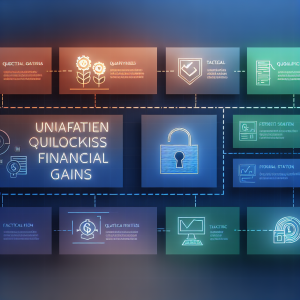President Donald Trump’s proposed “Big, Beautiful Bill” is poised to deliver the first significant tax relief for older Americans since 2017, introducing a temporary “senior bonus” deduction that could reshape the financial landscape for retirees from 2025 through 2028. This policy innovation isn’t just another tax tweak—it’s a strategic move with profound implications for middle-income seniors, Social Security’s sustainability, and the broader fiscal health of the nation.
What’s on the Table?
The Senate version of the bill offers a generous $6,000 deduction per filer aged 65 or older—doubling to $12,000 for couples—irrespective of whether they itemize deductions. Meanwhile, the House proposes a more conservative $4,000 per person deduction, as reported by The Washington Post. Both versions feature income phase-outs, targeting relief to those who need it most: the deduction phases out completely for single filers earning above $175,000 and joint filers above $250,000.
Who Benefits Most?
Middle-income retirees stand to gain the most. For example, a married couple earning $100,000 annually could see federal tax savings of roughly $1,600 under the Senate’s plan, according to analysts at Kiplinger. Lower-income seniors, many of whom already pay little to no tax on Social Security benefits, will see smaller benefits or none at all, while high-income retirees are phased out entirely. As Howard Gleckman from the Urban-Brookings Tax Policy Center notes, this approach “targets the people who need the help more,” a crucial point in the ongoing debate about equitable tax policy for aging Americans.
Bigger Picture: Social Security and Fiscal Impact
Beyond immediate tax relief, this deduction holds significant implications for Social Security’s financial health. The Committee for a Responsible Federal Budget estimates that the senior bonus, combined with other tax extensions in the bill, could cost about $30 billion annually. However, this cost might be offset by extending the Social Security trust fund’s solvency from early 2033 to late 2032—essentially a modest but meaningful delay in exhaustion by trimming taxes seniors pay on their benefits.
On the flip side, the Tax Foundation warns that if the deduction becomes permanent, it could cost up to $250 billion, raising concerns about long-term fiscal sustainability. This tension between providing immediate relief and preserving future solvency is a critical balancing act for policymakers.
What Investors and Advisors Should Watch and Do
-
Retiree Financial Planning: Advisors should start recalibrating tax projections for clients aged 65+ to incorporate potential deductions, especially for middle-income retirees. This could influence decisions around Roth conversions, charitable giving, and timing of Social Security benefits.
-
Portfolio Positioning: With anticipated tax savings, retirees might have increased disposable income to allocate towards investments, healthcare, or debt reduction. Financial planners should advise clients on optimizing these funds to enhance retirement security.
-
Monitor Legislative Developments: The House and Senate must reconcile the $6,000 vs. $4,000 deduction figures before a final vote expected before the July 4 recess. Investors should stay alert to these developments, as the final figure will directly impact tax planning strategies.
-
Consider Inflation and Cost of Living Adjustments: Given rising inflation and healthcare costs for seniors, this tax break, while helpful, may not fully offset increased expenses. Advisors should integrate this into comprehensive retirement income strategies.
A Unique Insight: The Rise of Tax-Advantaged Senior Living Investments
One often overlooked implication is the potential boost to senior living and healthcare real estate sectors. With more disposable income from tax savings, retirees may be more inclined to invest in or move to higher-quality senior living facilities or healthcare services. This trend could create unique investment opportunities in REITs (Real Estate Investment Trusts) focused on senior housing, a sector projected by the National Investment Center for Seniors Housing & Care (NIC) to grow significantly over the next decade.
What’s Next?
The Trump administration touts this deduction as “historic tax relief” that slashes taxes on Social Security without altering benefit formulas—a politically palatable approach that could gain bipartisan support. However, the broader fiscal impact and the bill’s ultimate shape remain uncertain.
For investors and advisors, the key takeaway is to proactively integrate these potential changes into retirement planning and portfolio management. The “senior bonus” deduction is more than a tax break; it’s a signal of evolving policy priorities that could redefine retirement finances in the years ahead.
Sources:
- The Washington Post: Analysis of Senate and House tax proposals for seniors
- Kiplinger: Tax savings estimates for retirees
- Urban-Brookings Tax Policy Center: Expert commentary on targeted tax relief
- Committee for a Responsible Federal Budget: Fiscal impact on Social Security
- Tax Foundation: Long-term cost projections of the deduction
- National Investment Center for Seniors Housing & Care (NIC): Trends in senior housing investments
Stay tuned for updates as the legislative process unfolds—and prepare to adjust your financial strategies accordingly. This is the kind of exclusive insight Extreme Investor Network delivers, empowering you to navigate the shifting tax and retirement landscape with confidence.
Source: Here’s How You Qualify For The Benefit

